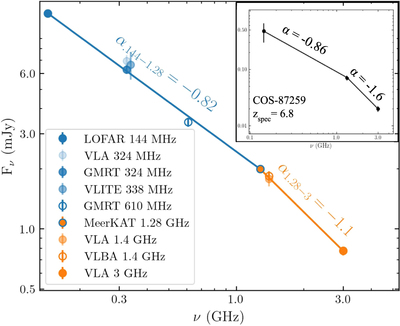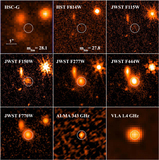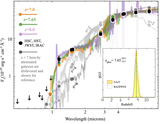Image Details

Caption: Figure 1.
Radio SED: all fluxes and associated errors are listed in Table 1. We measure the spectral slope between two sets of radio frequencies (blue line, orange line) and find significant spectral steepening indicative of high-z RL AGN (Saxena et al. 2018a; Broderick et al. 2022; Endsley et al. 2023). In the upper-right corner inset, we show the radio SED for the z spec = 6.8 heavily obscured RL AGN from Endsley et al. (2023) for reference.
Copyright and Terms & Conditions
© 2024. The Author(s). Published by the American Astronomical Society.






